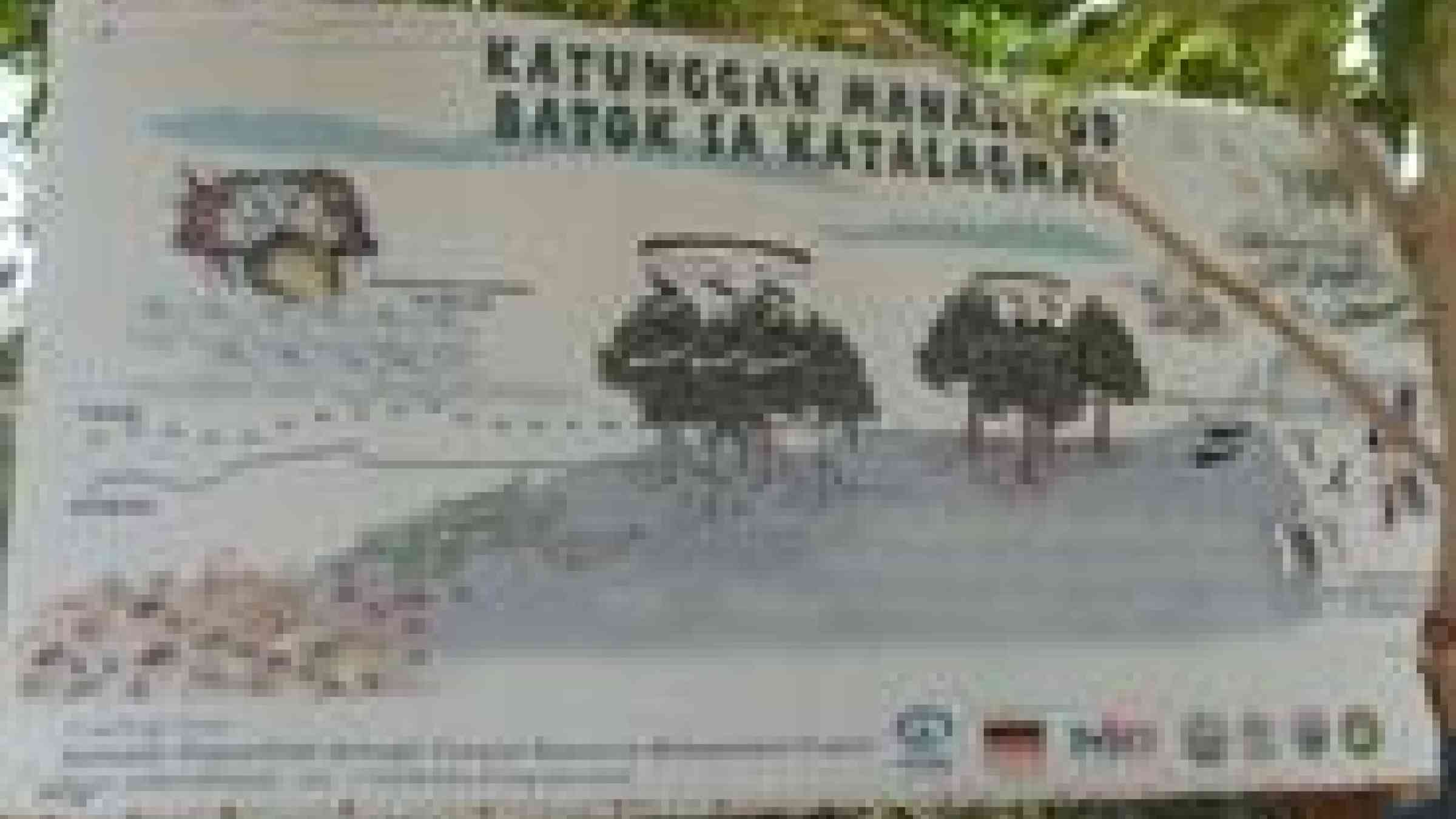Improving coastal resource management reduces disaster risk: Plan Germany replicates successful approach in the Philippines

From November 2009 to October 2011, Plan Germany implemented successfully a two-year project on disaster risk reduction in the Philippines. Its activities were conducted in the Camotes Group of Islands in Central Visayas and covered all four of the region’s municipalities.
Recognizing the fact that environmental degradation enhances vulnerability to natural hazards, the project linked disaster risk reduction (DRR) and improved coastal resource management (CRM). The total project costs amounted 126.032 Euros of which the Federal Foreign Office of the Federal Republic of Germany contributed 112.434 Euros. Prior a similar project had been successfully implemented in Eastern Samar, which was also co-funded by the German Federal Foreign Office. Hence, the experience gained from the previous project advanced the project implementation in the Camotes Group of Islands.
The Philippines is an archipelago of 7,107 islands and one of the most disaster prone countries in the world. Frequently the islands and its inhabitants living in the numerous coastal areas are affected by floods, typhoons, monsoon rains, earthquakes, tsunamis, volcanic eruptions, tidal surges, tidal waves and landslides. The risk of disasters is aggravated by the situation of widespread poverty and environmental degradation in particular of coastal environments. Besides, the level of awareness and knowledge on disaster risk management among the population is low and government authorities lack preparedness.
In the middle of the Camotes Sea, in the north-eastern part of Cebu Province in Central Visayas, the Camotes Group of Islands can be found. The Camotes Group consists of 56 villages of which 38 are situated along the coast, where fishing is the main source of livelihood. Even though the Camotes Group of Islands were declared a mangrove swamp forest reserve in 1981, degradation and destruction of the coastal habitats through over-exploitation and illegal practices, such as dynamite fishing, has continued. Therefore large parts of the mangrove forests and coral reefs are in a critical condition today.
However, to enable disaster mitigation these coastal resources are of major importance as they protect coastal areas from erosion and flooding. Their importance will further increase in the future considering climate change and the expected rise of sea levels.
Educative and informative activities were held at 72 schools (58 primary and 14 secondary schools) and within the communities. 40 fisher and 24 children’s groups participated in introductory courses on CRM and DRR. Opportunities for community members, school children and teachers to become actively involved in the topic and the project were given through public campaigns and activities like an “environmental month” and an “international coastal clean-up day”.
Local capacities for disaster preparedness and disaster management were enhanced through various activities. DRR and CRM trainers educated members of children and fisher groups, teachers and members of emergency response teams. An intensive four-stage progressive training on community based DRR was conducted at the eight most endangered villages, while the remaining 48 villages received basic DRR training.
The capacity building component of the project was complemented by a number of other activities: conduction of a participative coastal resource assessment; equipping of the disaster Response Team; installation of a community based early warning system involving simple instruments to measure rainfall and wind; review of existing regulations with regard to coastal resource management and support to community based organizations in lobbying for improvements; development of community risk maps and community-led monitoring of ten existing marine protected areas.
As part of the common Plan strategy also in this project all activities have been conducted in a participative manner and in close cooperation with relevant local authorities. Finally, the entire population of the Camotes Islands, with more than 89,000 inhabitants, benefited from the project and their resilience to the effects of natural disasters has been enhanced.